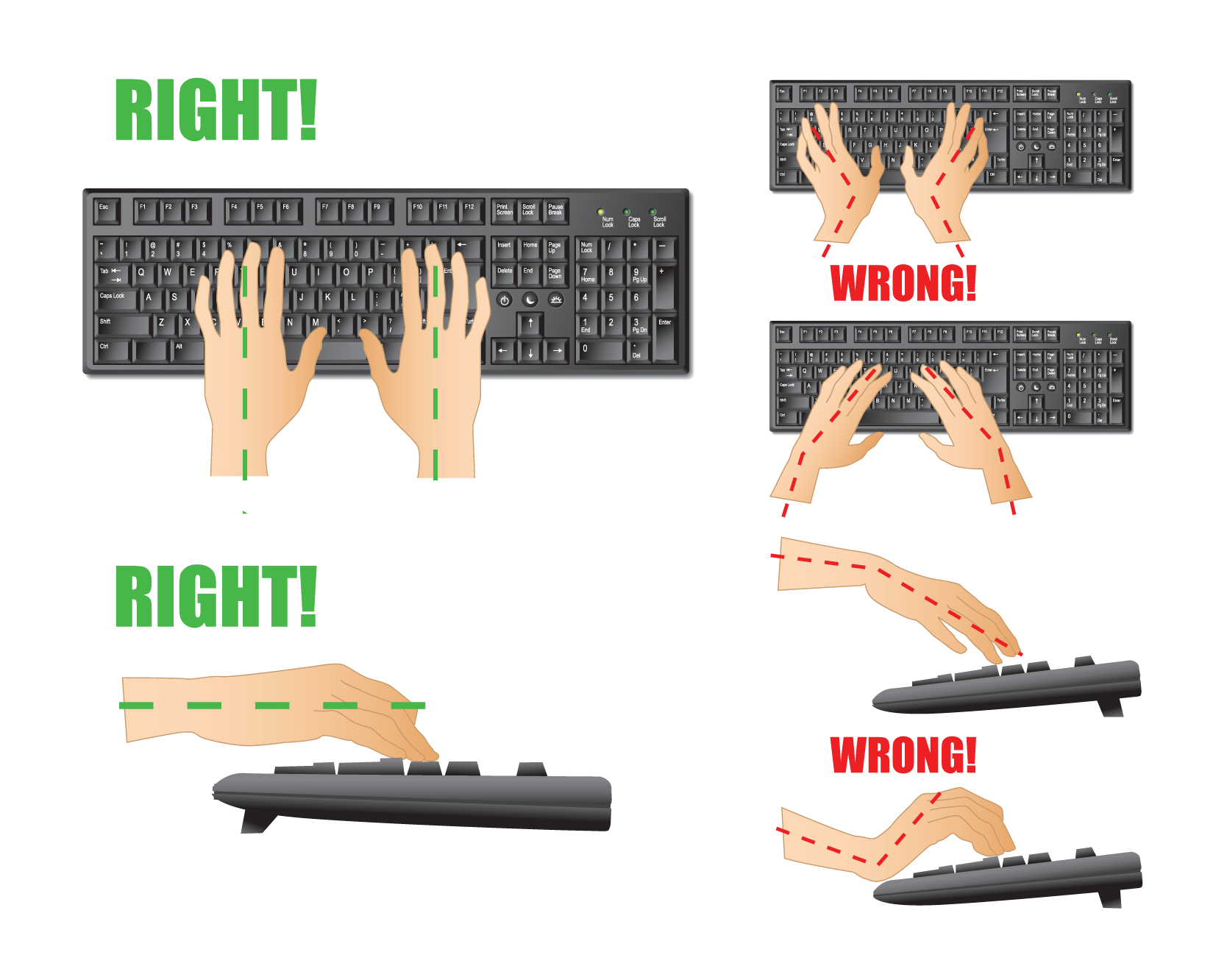
#Touch typing finger placement how to#
How to type fasterįollow these pointers and learn how to type faster: 1. If you work from home, find a comfortable spot and arrange your workspace there, away from any potential distractions. If you are using a laptop computer, refrain from using your lap as a table. Instead, arrange a desk and a chair that positions comfortably in relation to your height. It is beneficial to be seated comfortably while typing for long periods, as it can reduce fatigue and improve speed and accuracy. Try to pick a well lit, ventilated open space while choosing your workspace. This can significantly reduce strain on your eyes. Try to sit up straight at your desk, feet planted on the floor firmly, with your wrists positioned on the same level as the keyboard. This allows your fingers to move smoothly. You can invest in an adjustable chair to adjust your position for a variety of postures. Ideally, your screen can be below your eye level and you can tilt your head slightly downwards to view both the screen and the keyboard. It is common to slump while sitting in front of a screen for extended periods of time. This may affect your overall body posture negatively and reduce productivity. Try to keep your body relaxed and your shoulders upright to avoid the body pain that slouching induces. Try to correct your posture periodically until a healthier posture becomes your norm. It is beneficial to memorise the positions of the keys on your keyboard, especially the alphanumeric ones.

With enough practice, most writers become capable of typing fast without having to look at their hands or the keyboard. Getting a colour-coded keyboard or external accessories to improve visibility may help you grasp key positions easily. It is good practice to keep your hands arched up slightly from the wrists, with fingers resting lightly on the keyboard. If you are a beginner, you can start practising by pressing keys on one side of the keyboard exclusively with fingers that are on the same side. This improves typing speed and reduces the need for extensive wrist movement. You can calculate your typing speed in many ways. Words Per Minute (WPM) is one way to tangibly measure your typing speed. Try typing ‘what is my WPM' into a search engine and click one of the top links for a test. Doing this may give you a base reference to improve upon.


Record your initial result and keep it as a benchmark so you can measure improvement as you practise and gain expertise.Ī consistent volume of text is better for testing WPM. Checking speed for different amounts of text may change your WPM. So try to be consistent with the length of the text you choose each time you test your typing speed. Try closing your eyes and saying the keys out loud as you press themĪnother way to understand the positions of the letters is to look away from the keyboard and instead at the screen. Then speak out the keys as you press them and see if you are typing correctly. This exercise can help you memorise the keys and learn how to type faster. Touch-typing is typing without looking at the keyboard. It is one of the fastest ways to type once you are familiar with it. If you have never tried touch-typing before, it may seem difficult at first.

But once you can type without looking at the keys, you may be able to get to much faster typing speeds. It may be challenging to type this way initially, but you can improve with patience and practice. Try maintaining a rhythm while typing and press the keys at equal intervals. Limit your finger movement to be as short as possible. Not looking at your hands can teach your fingers where the keys are, through repetition and muscle memory. If you are unable to prevent yourself from looking at the keyboard, try typing with a light piece of cloth over your hands. You may find that you are typing slower as you start this exercise, but keep practising. Once you learn to touch-type, you may be able to reach a much higher speed than your normal typing. While typing, try to imagine the location of each key on the keyboard to guide yourself progressively. PractiseĪfter adjusting finger placement and body posture, one of the most effective ways to improve typing speed is by practising regularly. Try to set aside some time every day to practise touch-typing to improve your speed and accuracy. Over time, you can increase your typing speed and avoid errors. You can practise your typing by playing typing games or by listening to audiobooks or podcasts and transcribing them in real time.


 0 kommentar(er)
0 kommentar(er)
